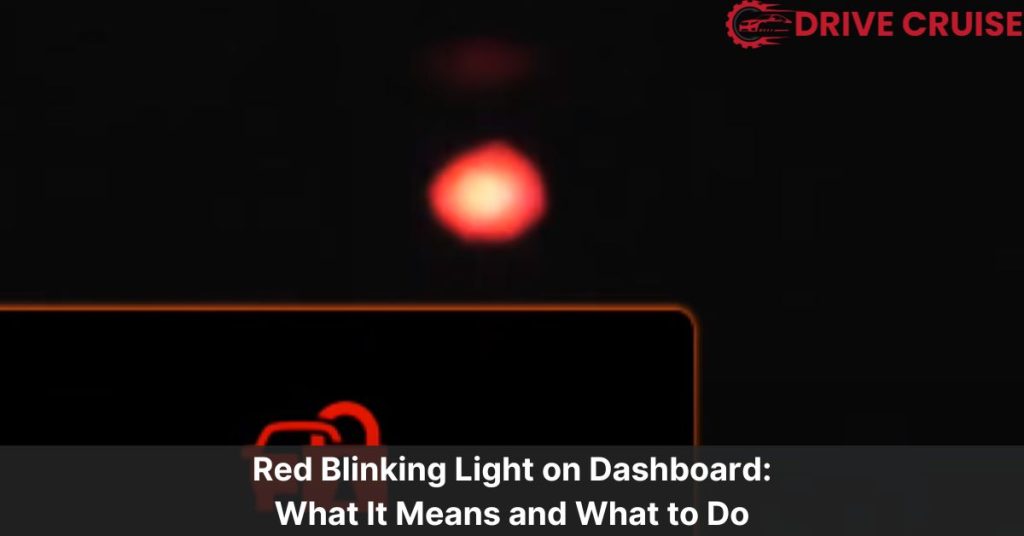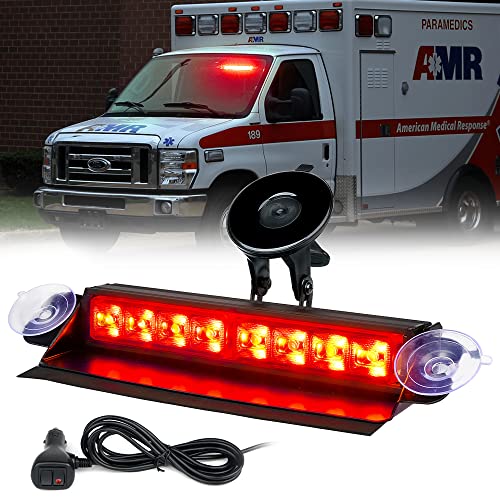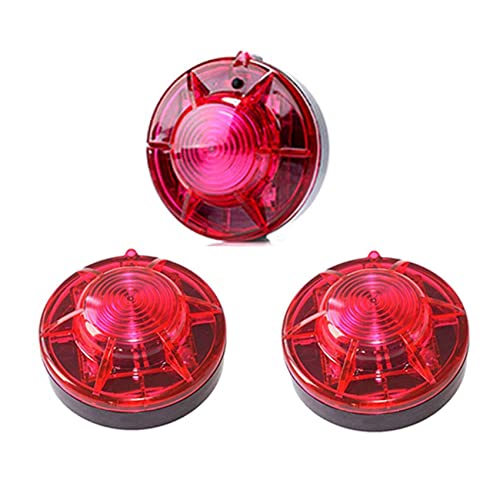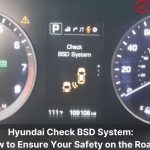We’ve all been there: driving along, minding our own business when suddenly, a red blinking light on the dashboard catches our eye. It’s enough to make anyone’s heart skip a beat. What does it mean? Is it urgent? Before panic sets in, let’s take a deep breath together. Understanding what these warning lights signify can save us a lot of stress and potentially prevent minor issues from turning into major repairs.
Navigating the world of dashboard indicators doesn’t have to be a daunting task. In fact, with a little knowledge, we can approach these situations with confidence. Whether it’s a gentle reminder for maintenance or an urgent signal for immediate attention, we’re here to demystify those pesky red lights. So, let’s buckle up and dive into the world of dashboard signals together, turning worry into wisdom one light at a time.
Understanding the Red Blinking Light on Your Dashboard
Building on the essence of tackling red blinking lights on the dashboard with calmness, let’s delve deeper into what these signals actually mean. Typically, a red blinking light indicates an urgent issue that needs immediate attention. However, not all red lights signal a dire emergency. Some alert you to safety features being activated or malfunctions that, while not catastrophic, require prompt action to avoid further damage.
- Engine Temperature Warning: This light resembles a thermometer submerged in water. It alerts you that the engine is overheating. Continuing to drive could cause significant damage, so it’s best to pull over safely and let the engine cool down.
- Oil Pressure Warning: Shown as an old-style oil can, this indicates that the oil pressure is too low. It’s crucial to turn off the engine as soon as it’s safe to do so and check the oil level, adding more if needed. If the problem persists, seeking professional help is essential.
- Brake System Warning: This may appear as an exclamation point within a circle, indicating a possible malfunction in the brake system. It could mean something as simple as the handbrake being left on or as serious as a loss of brake fluid.
- Battery Charge Warning: Represented by a battery symbol, this light signals that the vehicle’s charging system isn’t functioning correctly, possibly due to a failing alternator or battery. Immediate professional assessment can prevent you from being stranded.
- Airbag Indicator: Showing a person with an airbag deploying in front of them indicates a fault within the airbag system. Given the critical nature of airbags in crash safety, prompt attention from a qualified technician is necessary.
Understanding these key indicators can substantially mitigate the initial panic experienced upon seeing a red blinking light. Armed with this knowledge, you can identify the urgency of the situation and take the appropriate steps to address the issue, ensuring your safety and maintaining your vehicle’s health.
Causes of the Red Blinking Light
After exploring the meanings behind various red blinking lights on the dashboard, it’s crucial to understand what could cause these lights to flash in the first place. Knowledge of these causes not only aids in quick diagnosis but also in taking the appropriate actions to ensure our safety and the longevity of our vehicle.
Engine Temperature Warning Causes
High engine temperature, the primary cause for the engine temperature warning light, often results from a lack of coolant or a malfunction in the cooling system. Problems such as leaks in the coolant system, a faulty thermostat, or a broken water pump can lead to overheating, triggering the light.
Oil Pressure Warning Causes
A drop in oil pressure, indicated by the oil pressure warning light, typically stems from low oil levels or a failure in the oil pump. Other potential causes include a blockage in the oil delivery system or the use of incorrect oil viscosity, which can impair proper engine lubrication.
Brake System Warning Causes
The brake system warning light might flash due to various issues ranging from low brake fluid levels to a malfunction in the anti-lock braking system (ABS). Worn brake pads or problems with brake sensors can also activate this warning light.
Battery Charge Warning Causes
A flashing battery charge warning light primarily indicates charging system issues. It could be triggered by a failing alternator, a faulty battery, loose or corroded battery cables, or problems within the electrical system preventing proper battery charging.
Airbag Indicator Causes
The airbag indicator blinking could signify issues within the airbag system itself, such as sensor malfunctions, damaged airbag modules, or problems in the wiring harness connections. These issues prevent the airbag system from operating correctly, necessitating immediate attention.
Our understanding of these causes helps us react appropriately when we notice a red blinking light on our dashboard. Acting on these warnings promptly can prevent minor issues from escalating into major, costly repairs, ensuring our vehicle remains in optimal condition.
Immediate Steps to Take When You See a Red Blinking Light
Upon noticing a red blinking light on your dashboard, acting promptly can make a significant difference in preventing minor issues from becoming major repairs. Here, we share the immediate steps to take, tailored to the specific warnings discussed previously.
- Engine Temperature Warning: First, pull over safely and turn off the engine. Allow the vehicle to cool down before checking the coolant level. If it’s low, topping it up may temporarily solve the problem, but it’s crucial to check for leaks or a malfunctioning radiator when possible.
- Oil Pressure Warning: Stop driving as soon as it’s safe to do so. Operating a vehicle with low oil pressure can cause severe engine damage. Check the oil level once the engine has cooled. If it’s low, adding oil might help, but identifying the cause of low pressure is essential for preventing future occurrences.
- Brake System Warning: If this light appears, test your brake pedal pressure gently. If the pedal feels unusually soft or goes to the floor, pull over safely immediately. It’s often unsafe to continue driving without brake function. Contact roadside assistance or a professional mechanic for an inspection.
- Battery Charge Warning: This indicator suggests the battery isn’t charging correctly. While your vehicle might still run for a short period, it’s prudent to head straight to a service center or an auto parts store equipped to test your charging system. Meanwhile, avoid using any electrical components that aren’t necessary.
- Airbag Indicator: Unlike the others, an airbag system malfunction doesn’t usually require you to stop driving immediately. However, it does mean the airbags may not deploy in a collision. Prioritize getting this checked by a professional as soon as possible to ensure your safety and that of your passengers.
Following these steps helps manage the situation before seeking professional assistance. Remember, regular maintenance checks can prevent many dashboard warnings, but when they do appear, knowing how to respond keeps you and your vehicle safer on the road.
Long-Term Solutions and Preventative Measures
Building on the immediate steps to address red blinking lights on the dashboard, we delve into long-term solutions and preventative measures. Adopting these practices can significantly reduce the likelihood of encountering dashboard warnings and ensure a smoother driving experience.
Schedule Regular Maintenance
Regular maintenance stands out as the cornerstone of preventing dashboard warning lights. Keeping up with the manufacturer’s recommended service schedule helps in identifying and fixing potential issues before they escalate. This includes regular oil changes, brake checks, battery inspections, and tire rotations.
Monitor Vehicle Performance
Paying attention to changes in vehicle performance offers insights into potential issues. Unusual noises, changes in acceleration, or differences in braking behavior can indicate underlying problems. Addressing these signs early can prevent dashboard warnings.
Use Quality Replacement Parts
When repairs are necessary, opting for quality replacement parts ensures reliability and longevity. Inferior parts may fail sooner and lead to repeated issues or even trigger new dashboard warnings. Investing in high-quality parts pays off in the long run by reducing the need for frequent repairs.
Educate Yourself on Dashboard Symbols
Understanding what each dashboard symbol represents allows for quicker reactions to potential problems. Familiarizing oneself with the vehicle’s manual provides valuable information on dashboard lights and their meanings. This knowledge not only aids in identifying issues but also helps in communicating effectively with service professionals.
Implement a Pre-Drive Checklist
Before starting a journey, conducting a quick pre-drive checklist can catch issues early. Checking fluid levels, tire pressure, and ensuring all lights function properly can prevent surprises on the road. This habit takes minimal time but has a considerable impact on vehicle health and safety.
By integrating these long-term solutions and preventative measures, we minimize the occurrence of dashboard warning lights. Regular maintenance, vigilant monitoring, quality parts, education, and pre-drive checks collectively contribute to a safer, more reliable driving experience. These practices extend the lifespan of the vehicle and safeguard against unexpected repairs, affirming that prevention is always better than cure.
Conclusion
We’ve covered the essentials on decoding the mystery of red blinking lights on your dashboard. It’s clear that a little knowledge goes a long way in keeping stress at bay and avoiding those hefty repair bills. By taking immediate action when these warnings flash and committing to a routine of care and awareness we’re not just safeguarding our ride but also ensuring peace of mind on the road. Let’s keep our vehicles in top shape and our driving experiences smooth by staying informed and proactive. Here’s to many more safe and serene journeys ahead!
Related Posts:
- Green Car Symbol on Dashboard: What Does it Mean?
- How to Disable Anti Theft System Without Key: A Quick Guide
- What Does a Car with a Lock Symbol Mean? – Understanding Your Car’s Security System
- Red Blinking Light on Dashboard: What It Means and What to Do
- Security Indicator Light: A Guide to Understanding Your Car’s Safety Features














